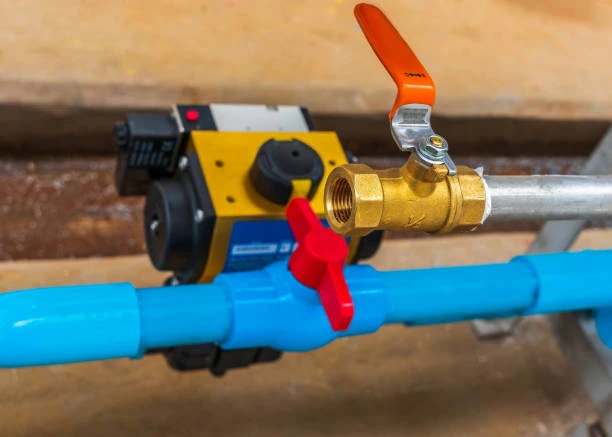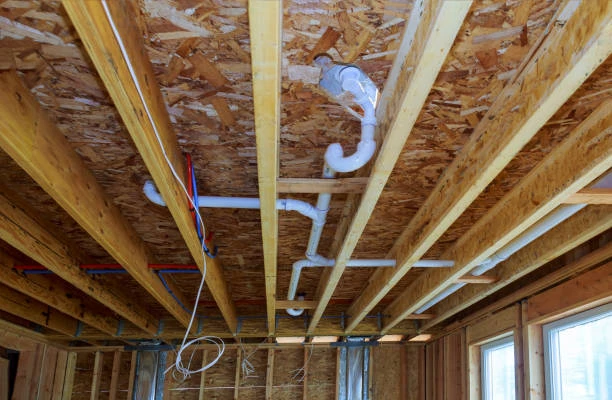Introduction
The solenoid valve industry in the United States is witnessing significant transformation driven by advancements in technology, increased demand across various sectors, and evolving regulatory frameworks. As we look toward 2034, it is essential to analyze the current trends, potential growth areas, and forecasts that will shape the future of solenoid valves in the country.
What are Solenoid Valves?
Solenoid valves are electromechanical devices that control the flow of liquids or gases. They operate by using an electromagnetic coil that, when energized, moves a plunger or armature to open or close the valve. These valves are widely used in various applications, including HVAC systems, automotive, industrial automation, and irrigation systems.

Current Trends in the Solenoid Valve Industry
1. Increasing Automation
One of the most significant trends in the solenoid valve industry is the push towards automation. Industries are increasingly adopting automated systems to enhance efficiency and reduce operational costs. Solenoid valves play a critical role in automation, controlling fluid and gas flow in processes ranging from manufacturing to healthcare.
2. Energy Efficiency
With growing awareness around environmental sustainability, there is a heightened focus on energy-efficient solutions. Manufacturers are innovating to create solenoid valves that consume less power while providing reliable performance. The development of low-power solenoid valves is particularly noteworthy, as they are designed to operate efficiently in applications requiring continuous operation.
3. Smart Technologies
The integration of smart technologies into solenoid valves is another emerging trend. Internet of Things (IoT) capabilities are being incorporated into valve systems, allowing for remote monitoring and control. This not only improves operational efficiency but also enables predictive maintenance, reducing downtime and maintenance costs.
4. Regulatory Compliance
As industries face stricter regulations regarding emissions and energy consumption, solenoid valve manufacturers must adapt their products to comply with these standards. Innovations in design and materials are essential to meet these regulatory requirements while maintaining performance and reliability.
5. Diverse Applications
The versatility of solenoid valves allows them to be used in a wide range of applications. From automotive systems that require precise fuel delivery to irrigation systems that need reliable water flow control, the demand for solenoid valves continues to expand. The healthcare sector, particularly, is leveraging solenoid valves in medical devices and equipment.
Market Forecast for Solenoid Valves (2024-2034)
Growth Drivers
- Industrial Automation: As more industries adopt automation, the demand for solenoid valves is expected to rise significantly. The manufacturing sector, in particular, is projected to be a major contributor to market growth.
- Smart Infrastructure: The development of smart cities and infrastructure is creating new opportunities for solenoid valve applications, especially in water management and energy distribution systems.
- Sustainability Initiatives: The push for greener technologies will drive the demand for energy-efficient solenoid valves, particularly in sectors such as automotive and HVAC.
Challenges
Despite the growth potential, the solenoid valve industry faces several challenges:
- Competition: The market is becoming increasingly competitive, with numerous players entering the field. This could lead to price wars and reduced profit margins.
- Supply Chain Disruptions: Global supply chain issues can impact the availability of raw materials needed for manufacturing solenoid valves, potentially leading to production delays.
- Technological Advancements: Rapid technological advancements mean that manufacturers must continually innovate to stay relevant, which can strain resources.
Market Projections
According to industry analysts, the solenoid valve market in the United States is expected to grow at a compound annual growth rate (CAGR) of approximately 5-7% over the next decade. By 2034, the market could reach a valuation of several billion dollars, driven by the factors mentioned above.
Innovations Shaping the Future
1. Advanced Materials
The use of advanced materials such as composites and high-performance polymers is revolutionizing the manufacturing of solenoid valves. These materials offer improved durability, corrosion resistance, and lightweight characteristics.
2. Miniaturization
As industries move toward more compact systems, the miniaturization of solenoid valves is becoming increasingly important. Smaller valves can be integrated into tight spaces, allowing for more flexible designs in various applications.
3. Enhanced Control Systems
The development of sophisticated control systems that integrate with solenoid valves is paving the way for greater precision and reliability. This includes the use of programmable logic controllers (PLCs) and other smart technologies that enhance operational control.
Conclusion
The solenoid valve industry in the United States is on the brink of significant growth, driven by automation, energy efficiency, and smart technology integration. As we approach 2034, the market will likely continue to evolve, with innovative solutions catering to diverse applications and regulatory requirements. Staying abreast of these trends will be essential for industry players to remain competitive and meet the changing demands of the market.
FAQs
1. What are the main applications of solenoid valves?
Solenoid valves are used in various applications, including HVAC systems, automotive fuel systems, industrial automation, irrigation systems, and medical devices.
2. How do solenoid valves work?
Solenoid valves operate using an electromagnetic coil that, when energized, moves a plunger or armature to open or close the valve, controlling the flow of fluids or gases.
3. What factors are driving the growth of the solenoid valve market?
Key drivers include increased automation, energy efficiency initiatives, the rise of smart technologies, and diverse application requirements across industries.
4. Are there energy-efficient options for solenoid valves?
Yes, many manufacturers are producing low-power solenoid valves designed for energy efficiency, which are especially useful in applications requiring continuous operation.
5. What challenges does the solenoid valve industry face?
Challenges include increasing competition, supply chain disruptions, and the need for continuous technological innovation to keep pace with industry demands.


















